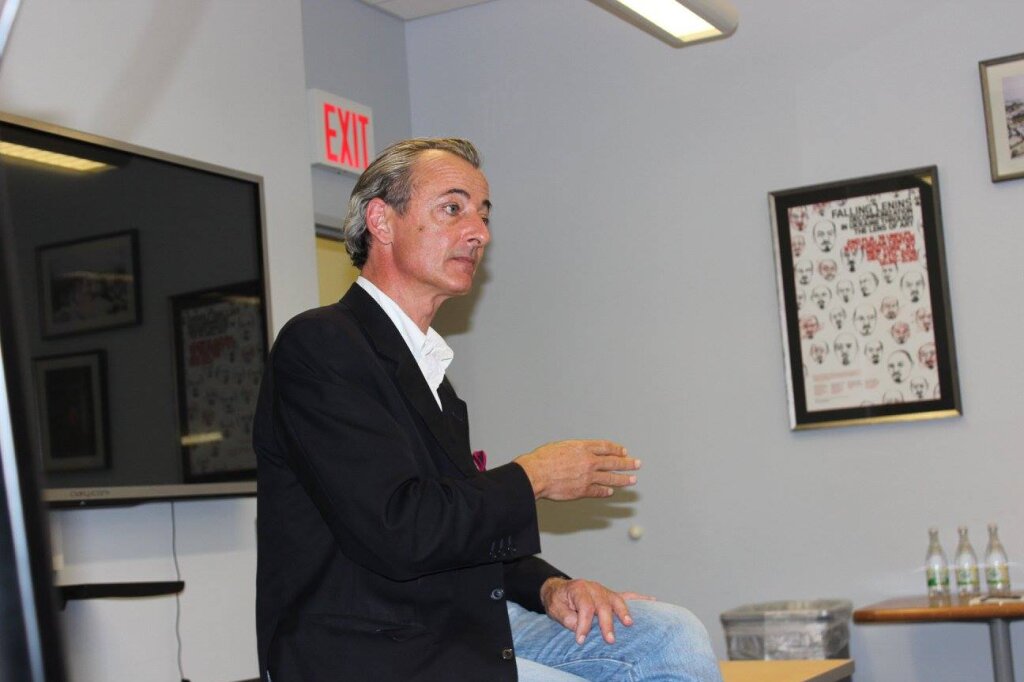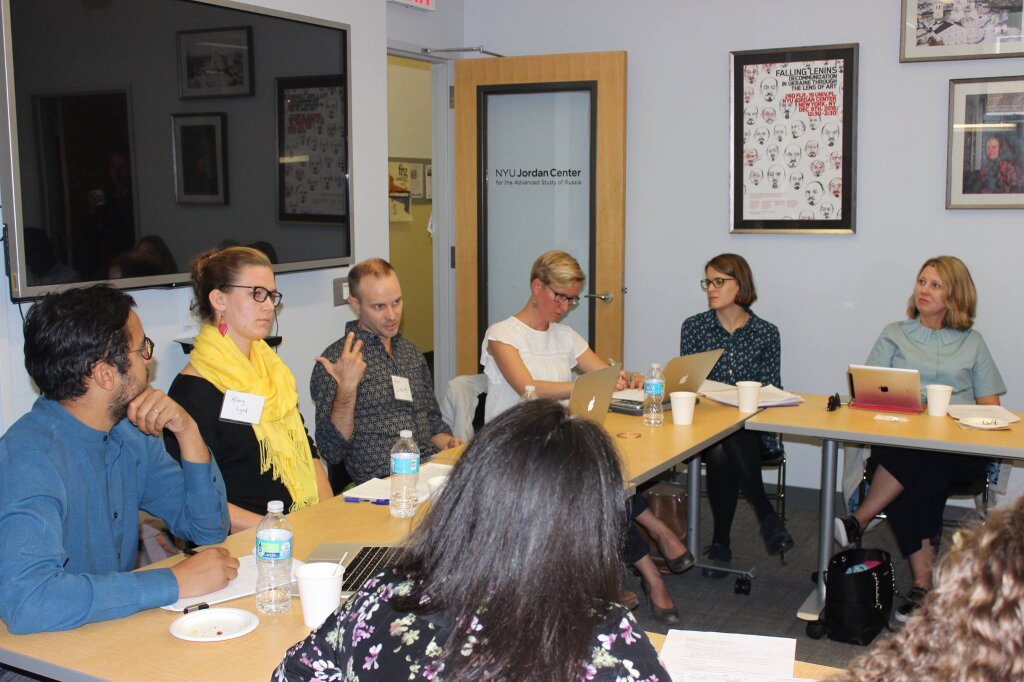Watch the video of the event here
On September 20th, 2017, the Jordan Center for the Advanced Study of Russia hosted a talk entitled, “What’s in a Year? Doubts about the Great Event”, featuring Yanni Kotsonis, Professor of History, Russian and Slavic Studies at NYU, and moderated by Joshua Tucker, Director of the Jordan Center. This was the first event in the Jordan Center’s “100 Year Anniversary of the 1917 Revolution” lecture series.
Kotsonis initiated the talk with the question, Why do we invest such meaning in single events? Today, historians look back on the Russian Revolution of 1917 and consider it to be the determining factor in the birth of socialism. According to Kotsonis, in re-constructing and interpreting historical events, we often have a tendency to insert facts in constructing a “juvenile fantasy.” He emphasized his own skepticism about such an approach, noting that upon reflection, his doubts led to a sense of disillusionment, not with socialism generally, but rather specifically with the 1917 Revolution and the particular version of socialism that it propagated.
In contrast to the mass uprisings of the Winter Palace illustrated in colorful reenactments of the Revolution, one of the most notable examples being Sergei Eisenstein’s depiction of the event in his film October, the actual event was far less dramatic and involved the Bolsheviks’ quiet arrest of members of the provisional government. Kotsonis suggested that in order to better understand both the context around the “Great Event,” as well as the process by which the idea of socialism gained meaning in the Soviet Union, it is necessary to investigate more closely events preceding and following the 1917 Revolution.
The tumultuous events leading up to the October Revolution highlighted both the incompetence of the Russian government, as well as the increasing divisions among societal factions, particularly those based on class, ethnicity and nationality. The provisional government established after the February Revolution chose to view Russia’s problems as part of a “political revolution” that would resolve themselves and consequently failed to address crucial social questions, even as poverty and hunger became rampant and unrest among oppositional groups escalated.
In these months Lenin positioned the unification of the State at the center of his ideology and aimed to build a society founded on the “universal.” As Kotsonis noted, “the legitimacy of [this new] state [was] determined by inclusion.” Within the context of this new socialist State, there would now be a space where all social/ethnic/class groups could co-exist. One may wonder how such a seamless transition from chaos to “utopia,” from stark division to complete unity, could realistically be realized. Kotsonis explained that these revolutionaries justified this upheaval through a kind of Hegelian dialectic, in which conditions were so terrible that utopia could subsequently be realized. It was on this basis – the privileging of the state as the only locus of inclusion – that the new regime gained the support of so many non-Bolsheviks, non-Marxists, and non-socialists. This new kind of power was reducible to the smallest units of society and thus intended to be all-inclusive. Socialism manifested itself as a State project; this State was embodied by every member of society, from the peasant to the bureaucrat, and therefore all were expected to take equal responsibility for the welfare of the State. Stalinism largely followed this idea of the State project but was characterized more strongly by industrialization, specific categorization of societal factions and orchestrated violence. The Soviet Party determined the conditions of society, in effect building a welfare state and instituting a kind of “stability.”
Reflecting on the events surrounding the 1917 Revolution, Kotsonis defined Soviet socialism as a “fixed understanding of fixed state ownership [that could] either rebuild what was destroyed or reproduce endlessly.” Eventually losing its forward momentum, the Soviet state fell into a state of stagnation during Brezhnev’s rule. So what meaning can we extract from the events of 1917? According to Kotsonis, the legacy of the Revolution exists in the “tremendous damage” of insisting that socialism need be a state project. Perhaps, then, it is important that we as historians make an example out of Kotsonis’ doubts and work to continue piecing together the events of the Soviet Union’s last century to comprehend exactly how the Revolution fits into the larger puzzle.
Anne O’Donnell, Assistant Professor of Soviet History at NYU, re-addressed the question of how it was possible to successfully make the transition from a crumbling state to a unified state. Kotsonis responded by reiterating the dialectical approach and claimed that when conditions are so terrible, it presents an opportunity for re-building. But why did the State have to be the locus? Kotsonis remarked that according to Soviet socialist ideology, “the State is the locus in which humanity can be reorganized.”



